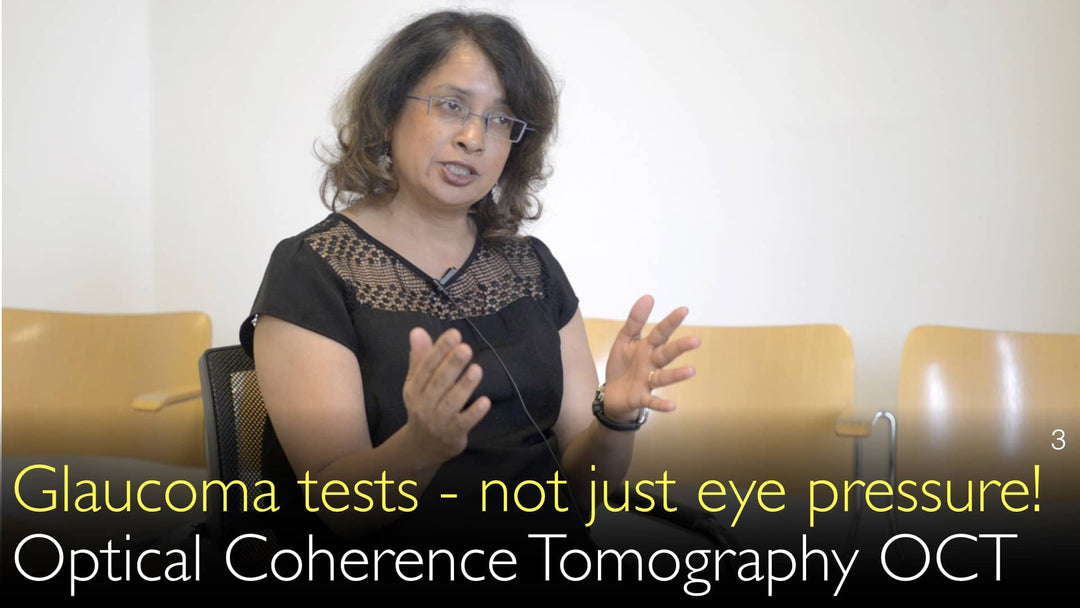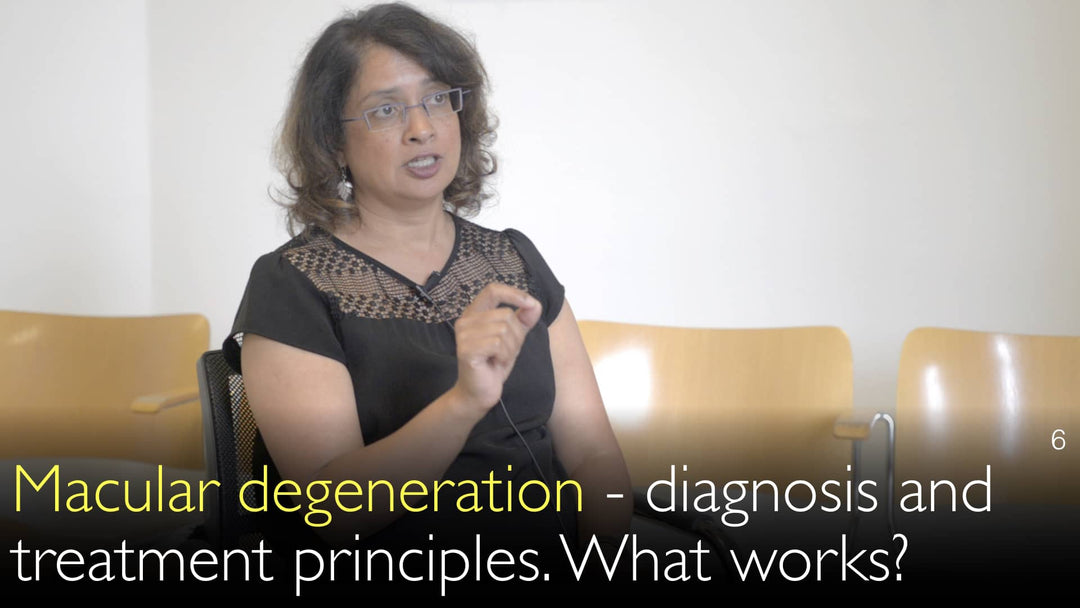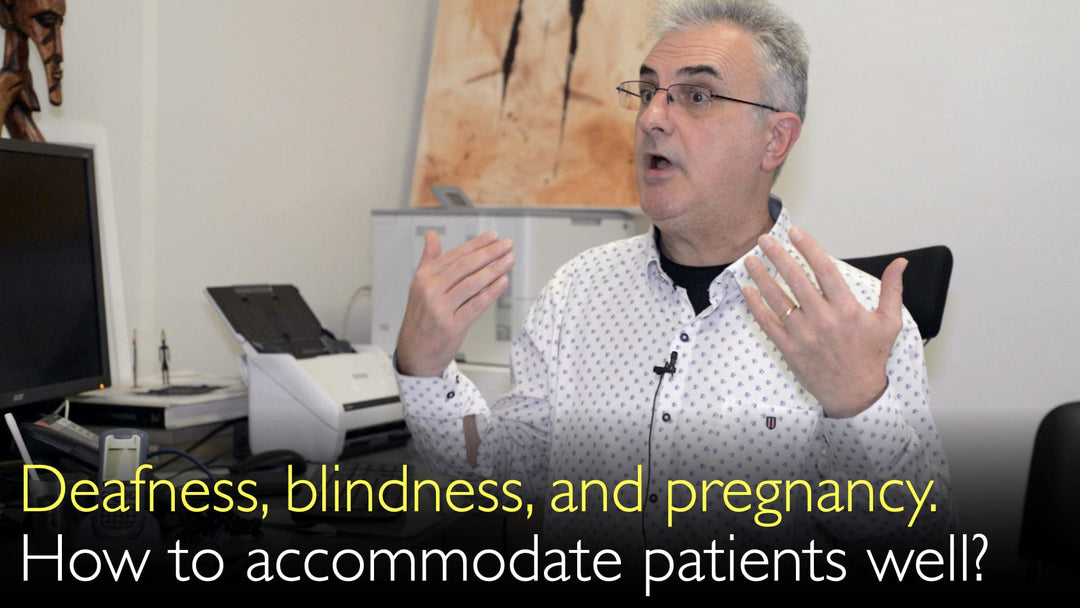Leading expert in glaucoma diagnosis and treatment, Dr. Francesca Cordeiro, MD, explains how modern diagnostic tests like Optical Coherence Tomography (OCT) and visual fields testing are essential for detecting this silent eye disease early. She details that OCT imaging can identify retinal nerve fiber layer thinning long before a patient experiences vision loss, making it a crucial tool for early intervention and preventing irreversible damage to the optic nerve.
Advanced Glaucoma Diagnosis: OCT and Visual Field Testing Explained
Jump To Section
- What is Glaucoma and Why is Early Diagnosis Critical?
- Beyond Eye Pressure: The Multimodal Approach to Glaucoma Diagnosis
- Optical Coherence Tomography (OCT): A Revolutionary Diagnostic Tool
- Visual Fields Testing: Measuring Functional Vision Loss
- OCT vs. Visual Fields: Which Test Detects Glaucoma Sooner?
- The Critical Importance of Establishing a Diagnostic Baseline
- Monitoring Glaucoma Progression Over Time
What is Glaucoma and Why is Early Diagnosis Critical?
Glaucoma is a group of eye diseases that cause progressive damage to the optic nerve, often without any initial symptoms. Dr. Francesca Cordeiro, MD, emphasizes that glaucoma is a "silent" disease, meaning patients typically do not experience vision complaints until significant, irreversible nerve damage has already occurred. This silent progression makes objective diagnostic testing absolutely essential for early detection and treatment to prevent blindness.
Beyond Eye Pressure: The Multimodal Approach to Glaucoma Diagnosis
Diagnosing glaucoma involves more than just measuring intraocular pressure. Dr. Anton Titov, MD, notes that a comprehensive diagnosis depends on several tests. Dr. Francesca Cordeiro, MD, confirms that a combination of examinations is required. This multimodal approach includes looking at the back of the eye with an ophthalmoscope, measuring visual fields, and performing advanced imaging like OCT. All these diagnostic tests taken together establish a definitive glaucoma diagnosis.
Optical Coherence Tomography (OCT): A Revolutionary Diagnostic Tool
Optical Coherence Tomography (OCT) is a key non-invasive imaging test for glaucoma. Dr. Francesca Cordeiro, MD, describes OCT as performing a "non-histological optical section of the eye," providing detailed cross-sectional images of the retina's layers. The test specifically looks at the retinal nerve fiber layer and the layer of retinal ganglion cells. In glaucoma, this top layer thins, and OCT can detect this structural change with high precision.
Visual Fields Testing: Measuring Functional Vision Loss
Visual field testing, or perimetry, is another cornerstone of glaucoma diagnosis. This test maps a patient's entire scope of vision, including peripheral vision, which is often the first area affected by glaucoma. Dr. Anton Titov, MD, discusses its role in the diagnostic process. While it is a gold standard, Dr. Francesca Cordeiro, MD, points out that a significant amount of nerve cell loss must occur before a visual field defect becomes apparent, making it a later sign of the disease.
OCT vs. Visual Fields: Which Test Detects Glaucoma Sooner?
A critical advancement in glaucoma care is understanding the sequence of detectable changes. Dr. Francesca Cordeiro, MD, explains that OCT can identify thinning of the retinal nerve fiber layer even before any changes are visible on a visual field test. This makes OCT a powerful predictor of future vision loss. The ability to see this structural progression years before functional vision is lost allows for much earlier intervention and treatment.
The Critical Importance of Establishing a Diagnostic Baseline
For individuals at risk, establishing a baseline is crucial. Dr. Anton Titov, MD, underscores that even a person with normal vision and no complaints needs these tests to create a reference point. This baseline allows ophthalmologists to compare future results and identify subtle changes indicative of early glaucoma. Early detection at this stage is the best strategy for preserving vision long-term.
Monitoring Glaucoma Progression Over Time
The true value of OCT and visual field testing extends beyond initial diagnosis to ongoing monitoring. Dr. Francesca Cordeiro, MD, highlights that these tests are used to see if peripheral vision changes are progressing over time. By comparing sequential OCT scans and visual field maps, doctors can objectively measure the rate of disease progression and adjust treatment plans accordingly to slow down or halt further damage to the optic nerve.
Full Transcript
OCT (Optical Coherence Tomography) is a key test for glaucoma diagnosis. OCT looks at your retinal nerve fiber for indicators of the glaucoma process. Visual field testing is important, but it is a late sign of glaucoma, when many nerve cells in the retina die.
Dr. Anton Titov, MD: Increased eye pressure, intraocular pressure, is not the only test for glaucoma. It's several tests looking at the back of the eye with the ophthalmoscope. Glaucoma diagnosis also depends on measuring visual fields.
Dr. Francesca Cordeiro, MD: Yes. All the diagnostic tests taken together can establish the diagnosis that a patient has silent glaucoma. Because it is silent, you need objective ways of measuring whether the eye disease is present or not.
Dr. Anton Titov, MD: One of the things we've become increasingly aware of is that even though the gold standard for glaucoma diagnosis is visual field testing, there has to be quite a lot of your eye nerve cells lost before the visual field is affected. So one of the things that has developed over the last few years is the ability to see progression of visual field loss.
Dr. Francesca Cordeiro, MD: We can do OCT (Optical Coherence Tomography) measurements. Optical Coherence Tomography looks at your retinal nerve fiber. Changes in the optic nerve are an indicator that you have glaucoma eye disease.
Seeing if peripheral field vision changes are progressing over time underscores the importance of having the visual field test done. Even if a person has normal vision and no complaints about vision, it is crucial to establish the vision acuity baseline.
Yes, that's absolutely true. But one of the things that has been coming through is our ability to image the back of the eye. This has improved over the last 10 years.
One of the big advances is the use of Optical Coherence Tomography (OCT). Optical Coherence Tomography is almost doing a non-histological optical section of the eye. The retina consists of lots of different layers of nerve cells. They're all specialized, but they're all damaged differently in glaucoma eye disease.
Dr. Francesca Cordeiro, MD: In glaucoma, the top layer consists of the retinal ganglion cells. We know that that top layer thins sometimes even before you have any changes on your visual field test. You can look for changes in the decline of the thickness of that retinal layer.
Dr. Anton Titov, MD: That in itself is an indicator that your visual field is going to be lost in the future. That is a sign of glaucoma.







